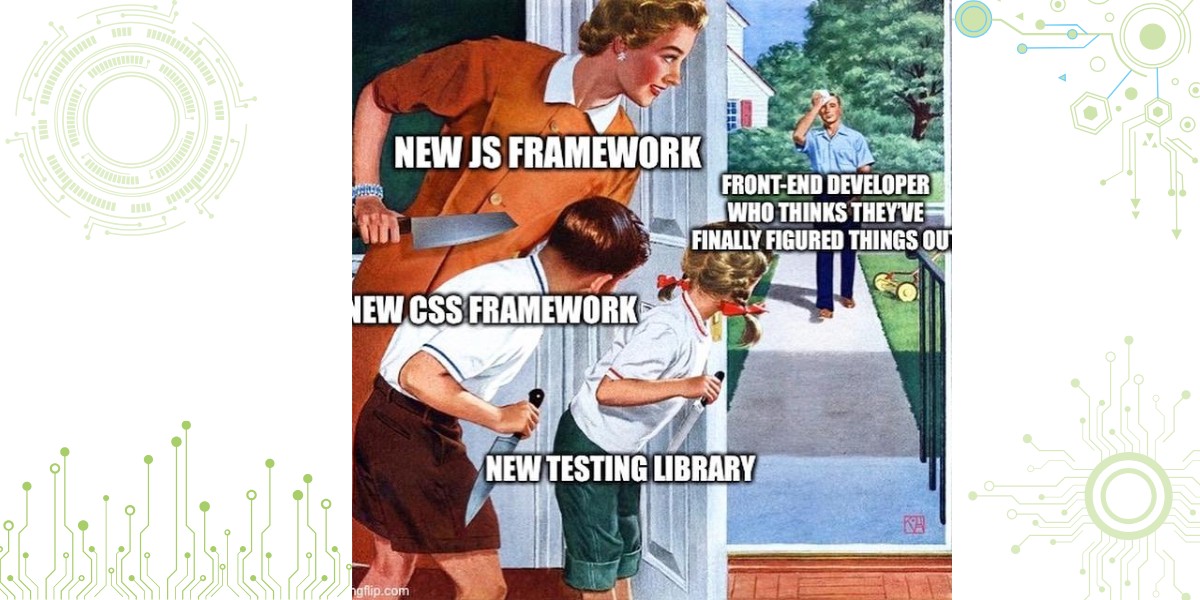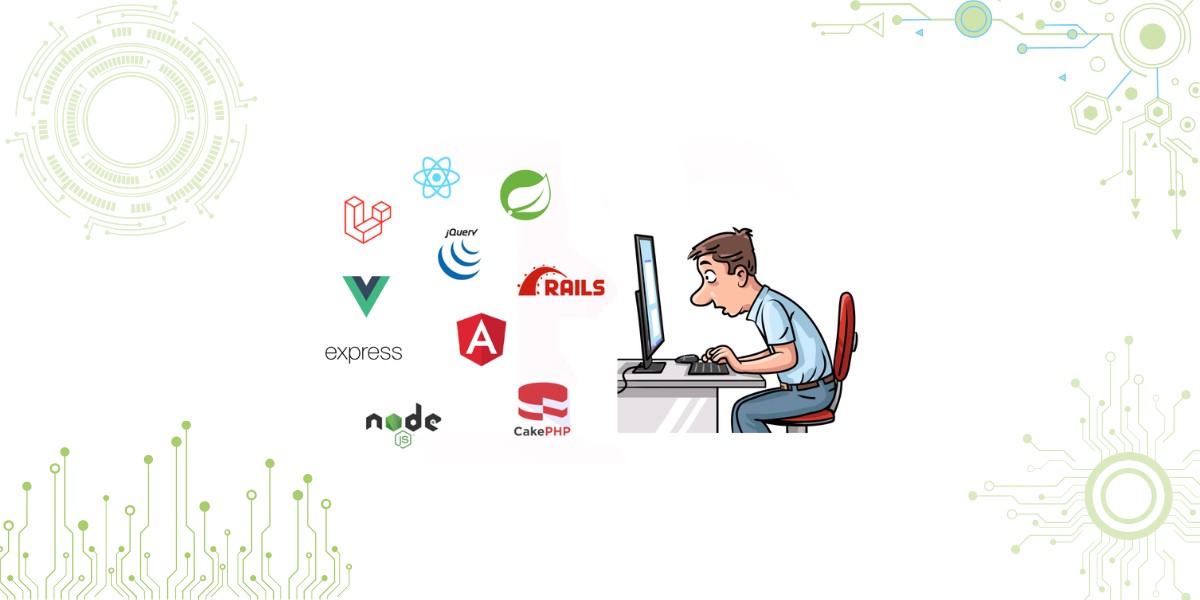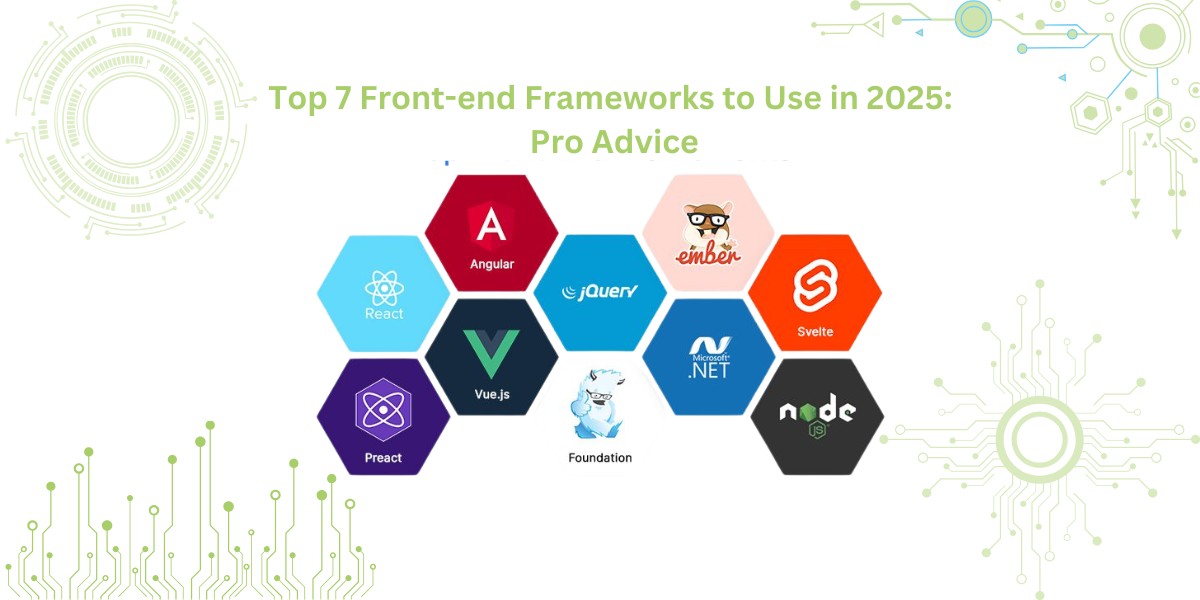Top 7 Front-end Frameworks to Use in 2025
Are you aiming to design appealing and functional user interfaces for web applications? It is important to pick the right technology stack for web development. A frontend framework is a key part of this stack. Frameworks enable faster, easier, and more effective development by leveraging the document object model or even more advanced concepts like the virtual document object model. All of them have their advantages, but picking one can be difficult.
In 2025, new trends and technologies shape the web development landscape. By the end of this blog, you will know the top front-end frameworks to consider. These include Ext JS, React, Angular, Vue.js, Svelte, SolidJS, and Qwik. Some of these popular frontend frameworks are limited by project scope, while others excel in specific areas.
We will also explore community support and learning resources for these frameworks. This includes tutorials, flexibility, scalability, and ease of use when designing user interfaces. Let’s get started!
Table of Contents
Factors to Consider When Choosing a Front-end Framework
Selecting the right JavaScript framework is crucial for your project. Choosing the wrong one can cause unnecessary hurdles. Key factors to consider include:
Scalability and Performance
Every project has an intended lifespan. Think about future users and additional features. If scalability is important, choose a complete frontend solution that ensures growth.
For vast large-scale applications, React is a great option. Its component-based architecture allows for reusable components, making code easier to manage. Angular is also suitable for large-scale applications, offering features like two-way data binding for building complex dynamic web apps. For speed, Svelte is ideal as it compiles code to pure JavaScript, delivering swift mobile rendering features.
Community Support and Documentation
A strong community has a big influence on success. Communities provide guides, forums, and problem-solving advice. Proper documentation saves time and effort.
React and Vue.js remain among the most popular frontend frameworks with the most active communities. SolidJS and Qwik are also gaining traction. Before selecting a framework, check its development activity and seek support through forums like GitHub and StackOverflow.
Ease of Learning and Developer Productivity
An easy-to-learn framework reduces development time and boosts team productivity.
For beginners, Vue.js is a great choice due to its straightforward framework and ample resources. Svelte is another beginner-friendly option with simple syntax and no need for a virtual DOM. Angular, while powerful, has a steeper learning curve, requiring TypeScript and intricate configurations.
Flexibility and Compatibility with Other Tools
A framework should integrate well with other tools and fit your project requirements.
React is highly adaptable and supports tools like Redux or Zustand. Qwik excels in server-side rendering and works with modern backend technologies. Semantic UI, a robust UI framework, is compatible with React and offers a smooth approach to building user interfaces.
When you’re building web and mobile applications or focusing on mobile and web applications, the framework you choose will shape your project’s success.
Deciding on a frontend framework can be daunting. Start with highly recommended frameworks, prioritize ease of use, and consider community support.
With this approach, you can confidently select the most suitable framework for your needs.

The Top 7 Frontend Frameworks in 2025
Given below are the 7 VERY IMPORTANT frontend development frameworks:
Ext JS
Sencha’s Ext JS is one of the leading frameworks for enterprise applications in 2025. It provides a plethora of ready-made UI widgets like grids, charts, and trees, offering an intuitive user interface. These tools work well for data-centric web apps and mobile applications.
Its MVVM architecture is excellent for managing sophisticated data manipulations and ensuring rest API compatibility. While learning Ext JS can be challenging for beginners, experienced developers often prefer it for large, mission-critical projects.
React
React, supported by Meta, remains one of the best frontend frameworks in 2025. Its virtual DOM allows for smooth and fast interactive user interfaces. React’s component-based system ensures ease of use for both small websites and large-scale applications.
It integrates seamlessly with modern frameworks like Next.js for server-side rendering. Additionally, mobile applications are efficiently developed using React Native.
With extensive community support and constant enhancements, React is a safe and reliable choice for both beginners and experienced developers.
Angular
Angular, developed by Google, offers everything needed for a complete project. This front-end framework is excellent for large applications.
It includes built-in tools for routing, state management, and testing. Angular enables rapid development of single-page web applications.
Its standout feature is built-in two-way data binding. This helps create dynamic interfaces with less code.
In 2025, its Ivy rendering engine brings exciting features. Despite a steep learning curve, its structured approach benefits teams on complex projects.
Vue.js
Vue.js is a lightweight framework known for its simplicity and flexibility. It is easy to learn and integrates well with existing projects.
It has a rich ecosystem of tools like Vue Router and Vuex for state management. These tools make it easy to build modern web applications.
Vue’s lightweight nature ensures good performance. It is suitable for both small projects and complex apps.
In 2025, Vue remains a top recommendation for developers.
Svelte
Svelte has risen in popularity in 2025. Unlike other frameworks, it does not use a Virtual DOM.
Instead, it compiles code into efficient JavaScript during build time. This makes Svelte extremely fast.
Its simple syntax makes it beginner-friendly. Svelte is perfect for developers focusing on fast-loading applications.
With the release of SvelteKit, building full-stack applications has become easier. For speed and simplicity, Svelte is a strong choice.
SolidJS
SolidJS is one of the fastest frameworks in 2025. It provides fine-grained reactivity for real-time updates.
It borrows concepts from React but enhances them. SolidJS compiles components into optimized JavaScript, improving runtime performance.
For interactive applications like live dashboards and chat apps, SolidJS is a top contender. Its small bundle size ensures lightweight and efficient software.
If performance is a priority, SolidJS is a great option.
Qwik
Qwik is an innovative framework in 2025. It focuses on instant-loading web applications.
Qwik introduces “resumability,” allowing apps to resume instantly from their last state. It breaks files into smaller units that load on demand.
This approach significantly reduces load time. Qwik stands out by providing excellent experiences on low-end devices.
If speed and innovation matter, Qwik is worth considering.
There are several options for frontend development in 2025. Enterprise-grade projects are better suited for Ext JS and Angular. Most developers prefer React and Vue because they are flexible.
Svelte, SolidJS, and Qwik excel in performance and innovation. Each framework has its pros and cons. Choosing one depends on project requirements and personal preferences.
Expert Advice on Picking the Right Framework
With so much buzz around frameworks, you might wonder which one to choose. Picking a framework depends on your project’s needs, team skills, and goals. Experts suggest starting by defining your requirements.
For enterprise projects, consider Ext JS or Angular. These provide excellent tools and features. They are ideal for large, complex applications. However, they have steep learning curves. A new team may experience slower productivity.
React and Vue.js are great for flexibility. React’s community support is unmatched. It is very flexible, making it suitable for all project types. Vue is better for smaller teams and tight deadlines. It is incredibly easy to learn and understand.
For performance-focused projects, choose Svelte or SolidJS. These frameworks prioritize speed and simplicity. Svelte uses code compilation, resulting in fast load times.
SolidJS handles real-time updates effortlessly. Both are ideal for modern, high-performance applications.
Looking for cutting-edge technology? Qwik is worth exploring. It’s built for instant-loading apps. This makes it ideal for slow devices or users with limited resources.
Think about your team’s skills. Consider your project’s size and complexity. Match the framework to your needs. By doing this, you’ll choose the right tool to ensure success.

Conclusion
Picking the right frontend frameworks for web is crucial in 2025. Each framework has unique strengths, catering to different project needs. Some are better suited for large, enterprise projects, while others prioritize speed and simplicity for web developers and frontend developers alike.
If you’re working on dynamic web applications or enterprise solutions, consider Ext JS or Angular. For flexibility and ease of use, React and Vue provide a complete dynamic solution with a rich user interface. If cutting-edge performance is your goal, explore Svelte, SolidJS, or Qwik.
Think about your project’s size, goals, and development process. Consider your team’s experience and evaluate scalability, performance, and community support. This will help you make the best choice for your web applications.
With the right framework, you’ll build fast, reliable, and modern web applications.
FAQs
What is the Best Front-end Framework for Beginners in 2025?
Vue.js is a great choice for beginners. It is simple to learn. The documentation is clear. Its syntax is easy to understand and use.
How Do Ext JS and React Compare for Enterprise Applications?
Ext JS works well for enterprise projects. It has built-in components and tools. React is more flexible. You can easily integrate it with third-party libraries.
Can I Use Multiple Frameworks in a Single Project?
Yes, it is possible. But it can be tricky. Plan carefully. Keep the frameworks separate. This will help avoid conflicts and maintain performance.
Start building powerful enterprise applications today with Ext JS.

